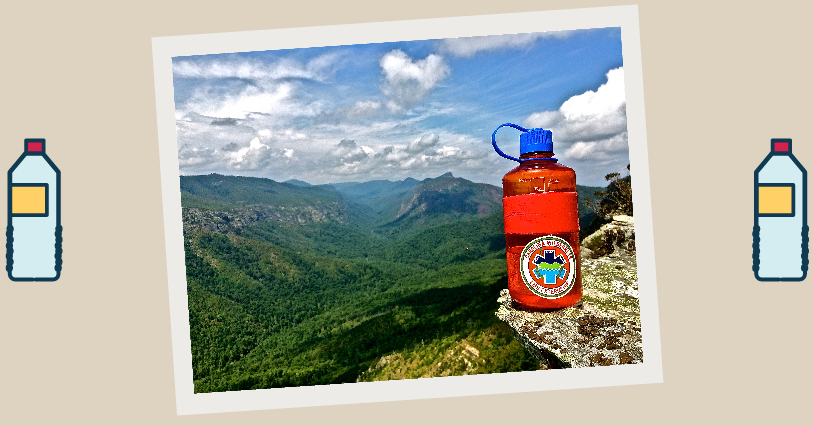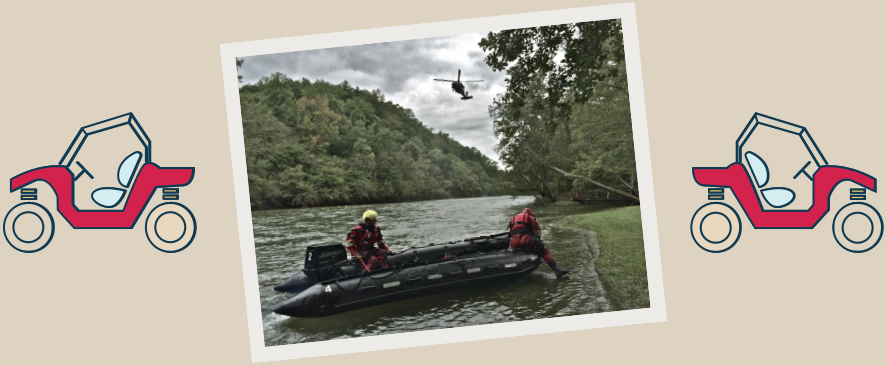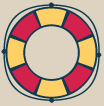"Esse quam videri."
This Latin phrase meaning "to be, rather than to appear to be," is not only the North Carolina state motto, but also aptly selected as the Carolina Wilderness EMS Externship (CWEMSE) motto. It sums up quite nicely the Externship's philosophy of learning through hands-on field training. This month truly lived up to its motto, and provided us with field training and experiences unrivaled by any other rotation we have completed.

The true goal of the rotation is to experience and learn about Wilderness EMS and Search and Rescue (SAR), their organization, and their execution. Although September is a likely time for major SAR calls, they are still rather rare. Time is not wasted, however, as there are a multitude of learning and training opportunities related to EMS, SAR, and emergency medicine. Right at the outset of the month, the Externs (an outdoor wilderness breed of intern) are equipped with a VIPER radio and a pager in order to monitor the county's EMS dispatches. Quick orientation was accomplished by accompanying the in-service training officer on a whirlwind tour of all the stations and providing protocol review sessions to the paramedics. Other activities included: a shift in the emergency department, dispatch shifts, ambulance ride-alongs, Med Center Air ride-alongs, and various training sessions with the special operations units such as swift water, high angle, and helicopter rescue (NCHART). In addition, we were free to respond to any 911 calls we believed might be interesting and educationally beneficial.

We responded to several exciting calls around Morganton, including a motorcycle-versus-motor vehicle with multiple patients. We arrived on scene to find a man with an open tib-fib fracture who was in otherwise stable condition, and a woman with a below knee traumatic amputation. After prompt stabilization and hemorrhage control, a helicopter was called in for the female patient. Although she was initially A&Ox4, as the helicopter crew reached the ambulance, her mental status and vitals declined precipitously. We decided to intubate her in the ambulance before loading her in the helicopter. Ryan assumed medical control of the situation and assisted in the sedation. The paramedics performed excellently and seemed happy to have extra medical support for such a harrowing situation.
Another day, during a breakfast meeting, we heard a dispatch for a cardiac arrest that was around the corner from us. We jumped in the car and responded "emergency response." We were the first on-scene with law enforcement and walked in to find a man being coached on CPR over the phone by the Emergency Operations Center (EOC). We took over compressions from the man and an ALS crew arrived shortly thereafter. Unfortunately, the patient was pronounced dead after 25 minutes of resuscitative efforts, but this was a true “esse quam videri” moment for David. Despite four years of medical school and three prior years of EMT experience, he had never actually done CPR on a cardiac arrest patient.

In addition to responding to calls, we had the amazing opportunity to participate in the North Carolina Helo-Aquatic Rescue Team (NCHART) training exercises. First, we spent a day becoming familiar and comfortable with swift water rescue gear and techniques. This experience prepared us well to be mock victims for the NCHART training. NCHART is a highly specialized team comprised of a unique collaboration between NC National Guard and local emergency services. The National Guard provides and operates UH-60 Blackhawk helicopters for swift water/flood and high angle wilderness rescue operations, and the local paramedics provide patient care during these rescue operations. In this exercise, they were practicing short-hauling a victim out of a swiftly moving river and safely placing them on land. With teams of boats, we, as victims, were dropped upstream and then contacted by a paramedic hanging 150 feet under the Blackhawk. After being secured to their line, we were lifted out of the rapids. To feel the hurricane-like power of Blackhawk helicopters and to soar 250 feet above the ground, dangling under a helicopter by a rope was a truly special experience.
Our first SAR call came our second week of the externship. It was dispatched as a heat exhaustion on the Brown Mountain Off-Road Vehicle (ORV) trails. With David's "Starsky and Hutch" red light flashing and his horn blaring, he made it to the ORV trailhead just in time to catch the first pair of ATVs from the Oak Hill Fire Department heading out. We combed the rugged trails for about 2.5 hours and even flipped our ATV once due to extremely difficult terrain. We managed to reach the patient just before sunset and safely extracted him to the staging ambulance. Although he had no serious medical problems, he was extremely dehydrated and weak. He had entered the trails earlier in the day with no knowledge of their difficulty and without enough food or water. This ill-preparedness when engaging the wilderness would be a theme for our SAR missions.

Our biggest SAR operation came as an extended extraction in the Gorge. Just as we were backing the boat into the lake for the traditional CWEMSE lake-mapping day, we got a dispatch to Linville Gorge. The call was for a 53-year-old male with chest pain, pulse of 158, who was in-and-out of consciousness at the bottom of the gorge. We quickly aborted our lake day and were the first to meet up with other SAR members at the trailhead. We grabbed our medical bags, Zoll monitor, and only a few supplies, as the man was supposedly only about a mile down the trail. Little did we know that he was down the steepest trail in the Gorge. In the 20 minutes it took us to reach the patient we had dropped more than 1,400 feet. Although we were thrilled at our first chance to descend into the gorge and constantly awed by the views from the trail, we were about to find out just how inhospitable this wilderness could be and why this area is infamous for its high density of rescue calls.

This SAR was an incredible experience and learning opportunity for us, and raised many questions about accountability, use of resources, and different extraction plans and their execution. It was impossible for us to comprehend why it takes 50, and sometimes up to 100 personnel to extract one patient a mile out of the wilderness until we actually had to do it. The collaboration between fire stations and incredible man-power that showed up was truly necessary in order to prevent exhaustion and ensure the safety of all those involved. There was also clearly a social aspect to the SARs for the rescuers. They seemed thrilled at the opportunity to be in the woods together using toys such as ATVs. The kind of real-life education and dialogue brought up during debriefings of such experiences is completely unrivaled to anything we have experienced in medical school. We have wanted to pursue a career in SAR and wilderness medicine for many years and we are finally able to translate our knowledge into real-world experience.
The philosophy of the CWEMSE is, in our opinion, the only way to learn about wilderness EMS and SAR operations. Having the opportunity to work and learn from these highly skilled and knowledgeable professionals of Burke County and North Carolina was a true privilege, and has equipped us with proficiency and real-world experience that we would have never otherwise been exposed to. "Esse Quam Videri" is truly a motto worth living by.
The Carolina Wilderness EMS Externship is available to any fourth year medical student or resident physician in an accredited medical school or residency program. Please visit http://www.blueridgehealth.org/wildems/ for more information.
